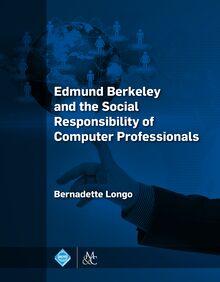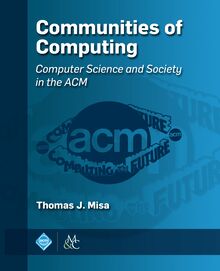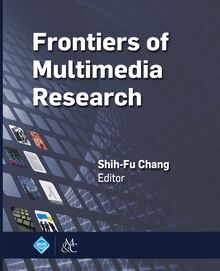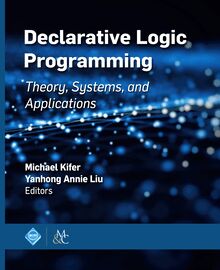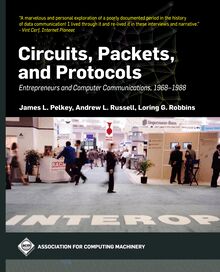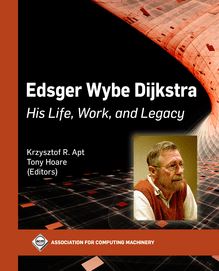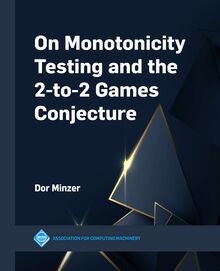-
 Univers
Univers
-
 Ebooks
Ebooks
-
 Livres audio
Livres audio
-
 Presse
Presse
-
 Podcasts
Podcasts
-
 BD
BD
-
 Documents
Documents
-
- Cours
- Révisions
- Ressources pédagogiques
- Sciences de l’éducation
- Manuels scolaires
- Langues
- Travaux de classe
- Annales de BEP
- Etudes supérieures
- Maternelle et primaire
- Fiches de lecture
- Orientation scolaire
- Méthodologie
- Corrigés de devoir
- Annales d’examens et concours
- Annales du bac
- Annales du brevet
- Rapports de stage
La lecture à portée de main
Vous pourrez modifier la taille du texte de cet ouvrage
Découvre YouScribe en t'inscrivant gratuitement
Je m'inscrisEmbracing Interference in Wireless Systems , livre ebook
Découvre YouScribe en t'inscrivant gratuitement
Je m'inscrisEn savoir plus
Vous pourrez modifier la taille du texte de cet ouvrage
En savoir plus

Description
same time, their signals interfere, resulting in a collision. In traditional
networks, collisions cause the loss of the transmitted information. For this
reason, wireless networks have been designed with the assumption that
interference is intrinsically harmful and must be avoided.
This book, a revised version of the author's award-winning Ph.D.
dissertation, takes an alternate approach: Instead of viewing interference
as an inherently counterproductive phenomenon that should to be avoided, we
design practical systems that transform interference into a harmless, and
even a beneficial phenomenon. To achieve this goal, we consider how wireless
signals interact when they interfere, and use this understanding in our
system designs. Specifically, when interference occurs, the signals get
mixed on the wireless medium. By understanding the parameters of this
mixing, we can invert the mixing and decode the interfered packets; thus,
making interference harmless. Furthermore, we can control this mixing
process to create strategic interference that allow decodability at a
particular receiver of interest, but prevent decodability at unintended
receivers and adversaries. Hence, we can transform interference into a
beneficial phenomenon that provides security.
Building on this approach, we make four main contributions: We present the
first WiFi receiver that can successfully reconstruct the transmitted
information in the presence of packet collisions. Next, we introduce a WiFi
receiver design that can decode in the presence of high-power
cross-technology interference from devices like baby monitors, cordless
phones, microwave ovens, or even unknown technologies. We then show how we
can harness interference to improve security. In particular, we develop the
first system that secures an insecure medical implant without any
modification to the implant itself. Finally, we present a solution that
establishes secure connections between any two WiFi devices, without having
users enter passwords or use pre-shared secret keys.
Sujets
Informations
| Publié par | Association for Computing Machinery and Morgan & Claypool Publishers |
| Date de parution | 01 juin 2014 |
| Nombre de lectures | 0 |
| EAN13 | 9781627054768 |
| Langue | English |
| Poids de l'ouvrage | 3 Mo |
Informations légales : prix de location à la page 0,2450€. Cette information est donnée uniquement à titre indicatif conformément à la législation en vigueur.
Extrait
Embracing Interference in Wireless Systems
ACM Books
Editor in Chief
M. Tamer zsu, University of Waterloo
ACM Books is a new series of high-quality books for the computer science community, published by ACM in collaboration with Morgan Claypool Publishers. ACM Books publications are widely distributed in both print and digital formats through booksellers and to libraries (and library consortia) and individual ACM members via the ACM Digital Library platform.
This first book by Shyam Gollakota is an updated version of the dissertation that won the 2012 ACM Doctoral Dissertation Award. Other books in the series include those listed below.
Embracing Interference in Wireless Systems
Shyamnath Gollakota, University of Washington
2014
Trust Extension as a Mechanism for Secure Code Execution on Commodity Computers
Bryan Jeffrey Parno, Microsoft Research
2014
A Framework for Scientific Discovery through Video Games
Seth Cooper, Microsoft Research
2014
Embracing Interference in Wireless Systems
Shyamnath Gollakota
University of Washington
ACM Books #1
Copyright 2014 by the Association for Computing Machinery and Morgan Claypool Publishers
All rights reserved. No part of this publication may be reproduced, stored in a retrieval system, or transmitted in any form or by any means-electronic, mechanical, photocopy, recording, or any other except for brief quotations in printed reviews-without the prior permission of the publisher.
Designations used by companies to distinguish their products are often claimed as trademarks or registered trademarks. In all instances in which Morgan Claypool is aware of a claim, the product names appear in initial capital or all capital letters. Readers, however, should contact the appropriate companies for more complete information regarding trademarks and registration.
Embracing Interference in Wireless Systems
Shyamnath Gollakota
books.acm.org www.morganclaypool.com
ISBN: 978-1-62705-474-4 print ISBN: 978-1-62705-475-1 ebook ISBN: 978-1-62705-476-8 ePub Series ISSN: (to come)
DOIs: 10.1145/2611390 Book
10.1145/2611390.2611391 Preface
10.1145/2611390.2611392 Chapter 1
10.1145/2611390.2611393 Chapter 2
10.1145/2611390.2611394 Chapter 3
10.1145/2611390.2611395 Chapter 4
10.1145/2611390.2611396 Chapter 5
10.1145/2611390.2611397 Chapter 6
10.1145/2611390.2611398 Bibliography
A publication in the ACM Books series, #1 Editor in Chief: M. Tamer zsu, University of Waterloo
First Edition
10 9 8 7 6 5 4 3 2 1
To Rajeswari and Subramanyam Gollakota
Contents
Preface
Chapter 1 Introduction
1.1 Embracing Wireless Interference
1.1.1 Decoding 802.11 Collisions
1.1.2 Combating High-Power Cross-Technology Interference
1.1.3 Non-Invasive Approach to Securing Medical Implants
1.1.4 Secure Pairing Without Passwords or Prior Secrets
1.2 Organization
Chapter 2 Decoding 802.11 Collisions
2.1 Related Work
2.2 Scope
2.3 A Communication Primer
2.3.1 Practical Issues
2.4 ZigZag Decoding
2.4.1 Is It a Collision?
2.4.2 Did the AP Receive Two Matching Collisions?
2.4.3 How Does the AP Decode Matching Collisions?
2.4.4 Estimating and Tracking System Parameters
2.5 Dealing with Errors
2.6 Backward Compatibility
2.7 Beyond Two Interferers
2.8 Complexity
2.9 Experimental Environment
2.9.1 Setup
2.9.2 Micro-Evaluation
2.9.3 Does ZigZag Work?
2.9.4 The Impact of the SNR
2.9.5 Testbed Throughput and Loss Rate
2.9.6 Many Hidden Terminals
2.10 Discussion
Chapter 3 Combating High-Power Cross-Technology Interference
3.1 Impact of Cross-Technology Interference on 802.11n
3.1.1 Digital Cordless Phone
3.1.2 Baby Monitor
3.1.3 Microwave Ovens
3.1.4 Frequency Hopping Bluetooth
3.1.5 Summary
3.2 MIMO and OFDM Background
3.3 Problem Domain
3.4 TIMO
3.5 Decoding in the Presence of Cross-Technology Interference
3.5.1 Computing the Interferer s Channel Ratio
3.5.2 Decoding the Signal of Interest
3.5.3 Iterating to Increase Accuracy
3.5.4 Estimating the 802.11n Channel Functions
3.5.5 Finding the Interference Boundaries
3.5.6 Putting it together
3.5.7 Complexity
3.6 Ensuring The Interferer Can Decode
3.7 Implementation
3.8 Performance Evaluation
3.8.1 Cordless Phone
3.8.2 Baby Monitor
3.8.3 Microwave Oven
3.8.4 Multiple Interferers
3.9 Micro Benchmarks
3.10 Related Work
3.11 Discussion
Chapter 4 Non-Invasive Approach to Securing Medical Implants
4.1 IMD Communication Primer
4.2 Assumptions and Threat Model
4.2.1 Assumptions
4.2.2 Threat Model
4.3 System Overview
4.4 Jammer-Cum-Receiver
4.5 Protecting Against Passive Eavesdroppers
4.6 Protecting Against Active Adversaries
4.7 Implementation
4.8 Testing Environment
4.9 Evaluation
4.9.1 Micro-Benchmark Results
4.9.2 Protecting from Passive Adversaries
4.9.3 Protecting from Active Adversaries
4.10 Coexistence
4.11 Related Work
4.12 Discussion
Chapter 5 Secure Pairing without Passwords or Prior Secrets
5.1 Related Work
5.2 PBC and 802.11 Background
5.2.1 Push Button Configuration
5.2.2 802.11
5.3 Security Model
5.3.1 Threat Model
5.3.2 Security Guarantees
5.4 TEP Design
5.4.1 Tamper-Evident Message (TEM)
5.4.2 Securing PBC using TEM
5.4.3 Example scenarios
5.4.4 Making Pairing Faster
5.5 TEM on Off-the-shelf Hardware
5.5.1 Scheduling Slot Transmission
5.5.2 Energy Detection at the Receiver
5.5.3 Sending A Synchronization Packet
5.5.4 Checking for TEM While Transmitting
5.6 Evaluation
5.6.1 Evaluating TEP s Security
5.6.2 Evaluating TEP s Accuracy
5.6.3 Evaluating TEP s Performance
5.6.4 Performance with Non-802.11 Traffic
5.7 Discussion
Chapter 6 Conclusion
6.1 Looking Forward
Bibliography
Author s Biography
Preface
The wireless medium is a shared resource. If nearby devices transmit at the same time, their signals interfere, resulting in a collision. In traditional networks, collisions cause the loss of the transmitted information. For this reason, wireless networks have been designed with the assumption that interference is intrinsically harmful and must be avoided.
This book takes an alternate approach: instead of viewing interference as an inherently counterproductive phenomenon that should to be avoided, we design practical systems that transform interference into a harmless, and even beneficial, phenomenon.
To achieve this goal, we consider how wireless signals interact when they interfere, and use this understanding in our system designs. Specifically, when interference occurs, the signals get mixed on the wireless medium. By understanding the parameters of this mixing, we can invert the mixing and decode the interfered packets, thus making interference harmless. Furthermore, we can control this mixing process to create strategic interference that allow decodability at a particular receiver of interest, but prevent decodability at unintended receivers and adversaries. Hence, we can transform interference into a beneficial phenomenon that provides security.
Building on this approach, we make four main contributions. First, we present the first WiFi receiver that can successfully reconstruct the transmitted information in the presence of packet collisions. Next, we introduce a WiFi receiver design that can decode in the presence of high-power cross-technology interference from devices like baby monitors, cordless phones, microwave ovens, or even unknown technologies. We then show how we can harness interference to improve security. In particular, we develop the first system that secures an insecure medical implant without any modification to the implant itself. Finally, we present a solution that establishes secure connections between any two WiFi devices, without having users enter passwords or use pre-shared secret keys.
Acknowledgments
The work presented in this book was done over six years of my graduate studies with my advisor, Dina Katabi. From my first year, despite my unfamiliarity with research, she spent hours daily discussing ideas, encouraging me to push the boundaries, and providing encouragement and support. The best times I had at MIT were the endless arguments about ideas I had with her, and in the process coming up with even better ideas. I am deeply indebted to Dina and hope to be as good an advisor when nurturing my own students.
I also had a wonderful experience working with Nickolai Zeldovich. We spent hours together, building upon each other s expertise to come up with the ideas in our Usenix Security paper on TEP. I also thank him for sitting through countless practice talks and helping with my job talk. I would also like to thank my thesis committee: Hari Balakrishnan, Muriel Medard, Srini Seshan, and Kevin Fu. I learned a lot from them, and my thesis has benefited significantly from their experience and feedback.
Much of the work in this book was possible because of a fantastic group of student collaborators: Fadel Adib, Haitham Hassaneih, Ben Ransford, and Nabeel Ahmed. As an undergraduate interning over the summer, Fadel contributed significantly to our SIGCOMM paper on TIMO. Without any prior experience with signals or wireless networks, Fadel implemented the basic framework for TIMO within just two months. Haitham was instrumental in getting our SIGCOMM paper on IMDShield submitted in a near perfect state. Likewise, Ben s writing significantly helped the IMDShield paper. Nabeel collaborated on our Usenix Security paper on TEP; his mastery of the WiFi driver helped us implement TEP on WiFi cards in less than three weeks.
I had the great pleasure of sharing my journey through graduate school with Sachin Katti, Nate Kushman, Srikanth Kandula, Hariharan Rahul, Swarun Kumar, Jue Wang, Ali Shoeb, Mythili Vutukuru, Lenin Sivalingam, Kyle Jamieson, Szymon Jakubczak, Katrina LaCurts, Arvind Thiagarajan, Raluca Ada Popa, Ramesh Chandra, Micah Brodsky, Samuel Perli, Dorothy Curtis, and Mary McDavit.
Sometimes it
-
 Univers
Univers
-
 Ebooks
Ebooks
-
 Livres audio
Livres audio
-
 Presse
Presse
-
 Podcasts
Podcasts
-
 BD
BD
-
 Documents
Documents
-
Jeunesse
-
Littérature
-
Ressources professionnelles
-
Santé et bien-être
-
Savoirs
-
Education
-
Loisirs et hobbies
-
Art, musique et cinéma
-
Actualité et débat de société
-
Jeunesse
-
Littérature
-
Ressources professionnelles
-
Santé et bien-être
-
Savoirs
-
Education
-
Loisirs et hobbies
-
Art, musique et cinéma
-
Actualité et débat de société
-
Actualités
-
Lifestyle
-
Presse jeunesse
-
Presse professionnelle
-
Pratique
-
Presse sportive
-
Presse internationale
-
Culture & Médias
-
Action et Aventures
-
Science-fiction et Fantasy
-
Société
-
Jeunesse
-
Littérature
-
Ressources professionnelles
-
Santé et bien-être
-
Savoirs
-
Education
-
Loisirs et hobbies
-
Art, musique et cinéma
-
Actualité et débat de société
- Cours
- Révisions
- Ressources pédagogiques
- Sciences de l’éducation
- Manuels scolaires
- Langues
- Travaux de classe
- Annales de BEP
- Etudes supérieures
- Maternelle et primaire
- Fiches de lecture
- Orientation scolaire
- Méthodologie
- Corrigés de devoir
- Annales d’examens et concours
- Annales du bac
- Annales du brevet
- Rapports de stage


